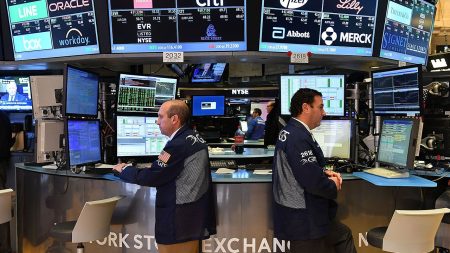Discounters are picking up shoppers that department stores lost, but pessimistic consumers cloud the future.
We now know that inflation is here to stay … at least in the lives of consumers, if not in the statistics. The official inflation rate for May was 3.3%, within the twenty-five-year range of 0% to 4%. But the price tags on both the big things, like housing, and the small things, like a dozen eggs, are still a lot higher than they were in 2019. (Eggs are 50% more expensive today, according to the Fed.)
US consumers love to shop, and that’s been a boon to the big discount chains. As the Macy’s of the retail world shrink or close, consumers are doing their treasure hunting at stores like those in the TJX group (TJMaxx, HomeGoods, Marshalls, and Sierra), Ross’s, and Burlington Coats.
There are plenty of soft spots in the retail landscape, but not at Ross, for example. The apparel and home goods chain shocked analysts this spring when it reported revenue for fiscal 2024 (ending Jan. 31) surged 9% year-over-year to $20.4 billion, and net income shot up by 24%.
TJX turned in an equally good year, with revenue up nearly 10% to $54 billion, a big rebound and then some from the pandemic low of $32 billion in 2021.
Even the department stores are discovering the allure of discounted fashion and accessories. As we noted here recently, Nordstrom’s discount chain, Nordstrom Rack, has been generating enough profits to compensate for its struggling flagship stores.
So, consumers seem to be spending in spite of it all. But what’s good news for discount retailers may also be a harbinger of what comes next. It has become almost a mantra in the economic media that consumers are running out of gas. Collectively, savings rates are historically low, total credit card debt is at a record, and the Fed reported total household debt for the first quarter of the year was nearly 24% higher than it was four years ago.
To be fair, the Fed also has reported that household net worth in the first quarter of this year is nearly 55% higher than four years ago. But about half of that net worth is represented by stocks and other investments (the S&P 500 index is more than 80% higher than it was four years ago), and real estate valuations—the Fed readings of homeowner equity rose 64% in four years.
Consumers may feel like they are doing okay, but they may be whistling past the graveyard. The most recent University of Michigan Consumer Survey reported that among consumers, “The year-ahead outlook for business conditions saw a particularly notable decline. Consumers … expect unemployment rates to rise and income growth to slow.”
While most economic pundits talk about economic soft landings, some of my colleagues in the retail industry worry that 2025 may turn out to be a soft beginning—of a recession.
Read the full article here
















